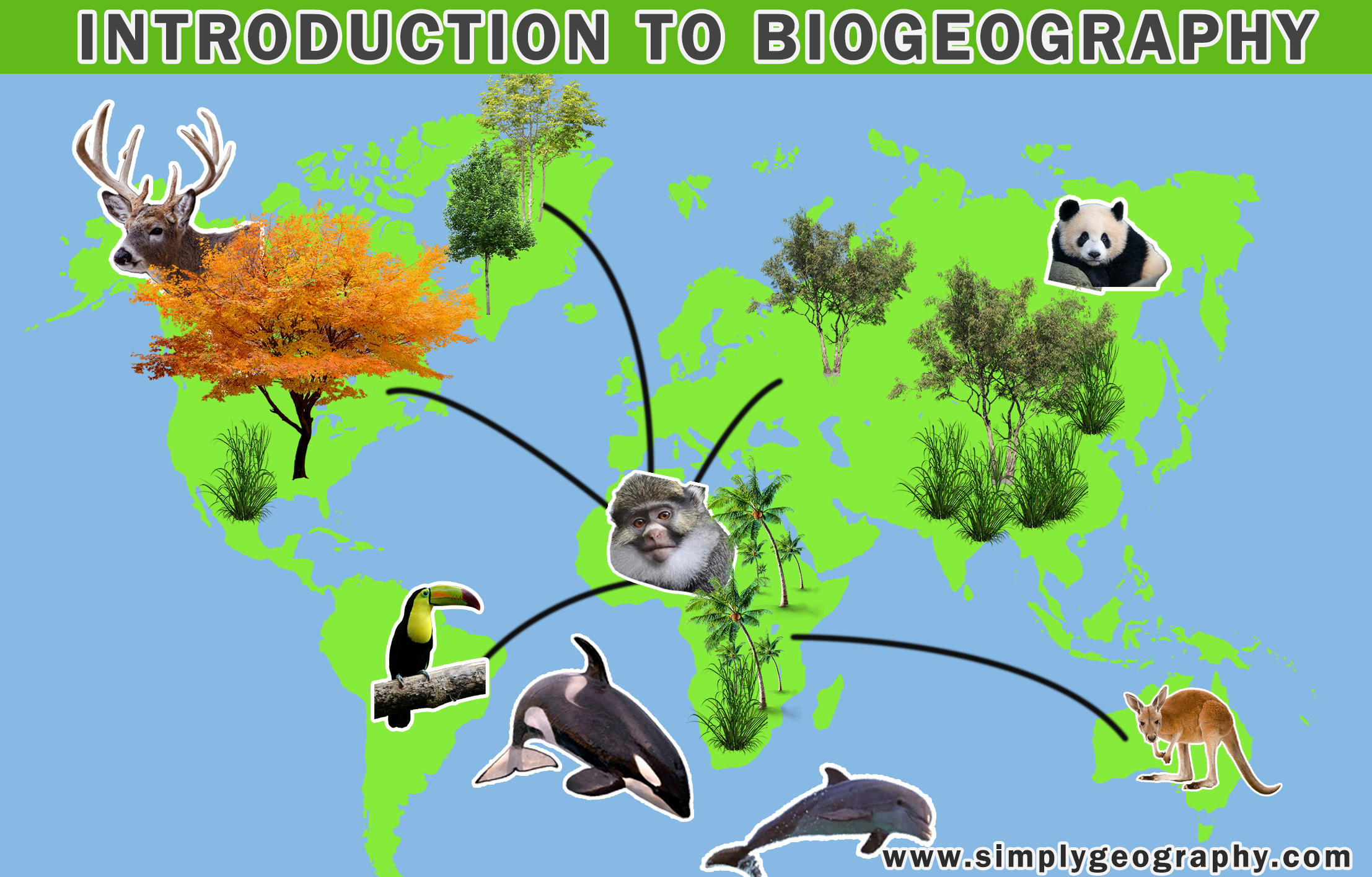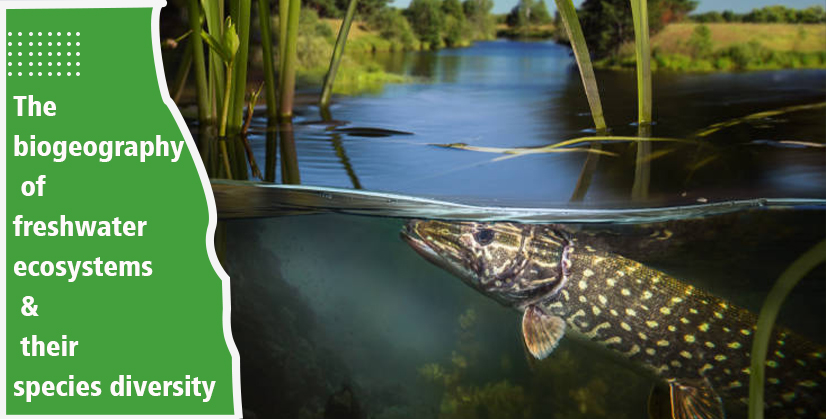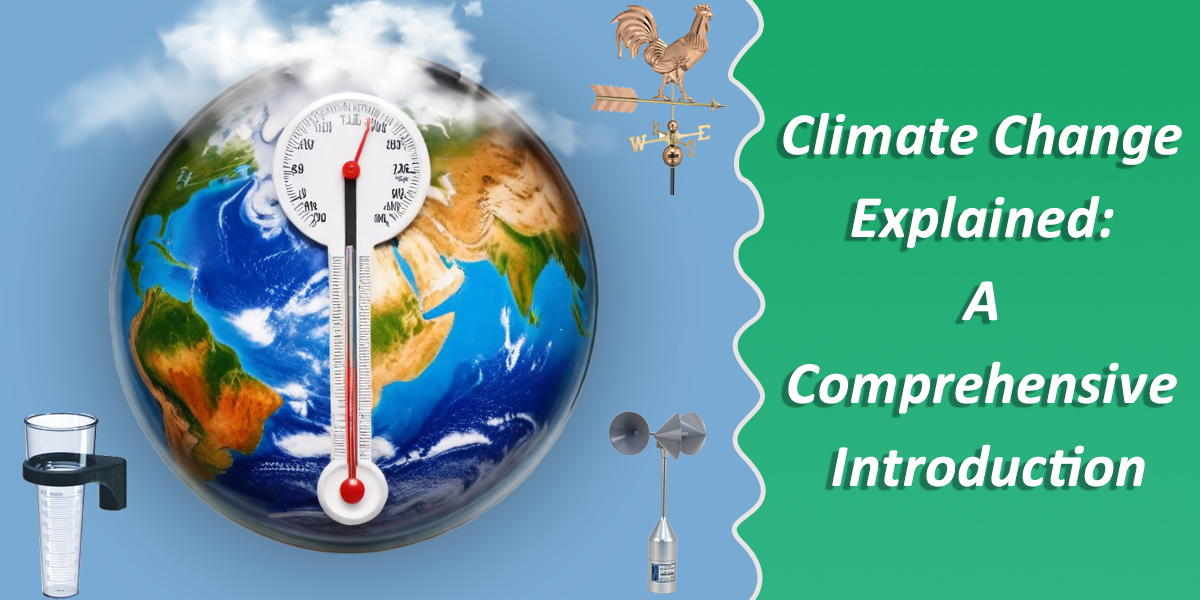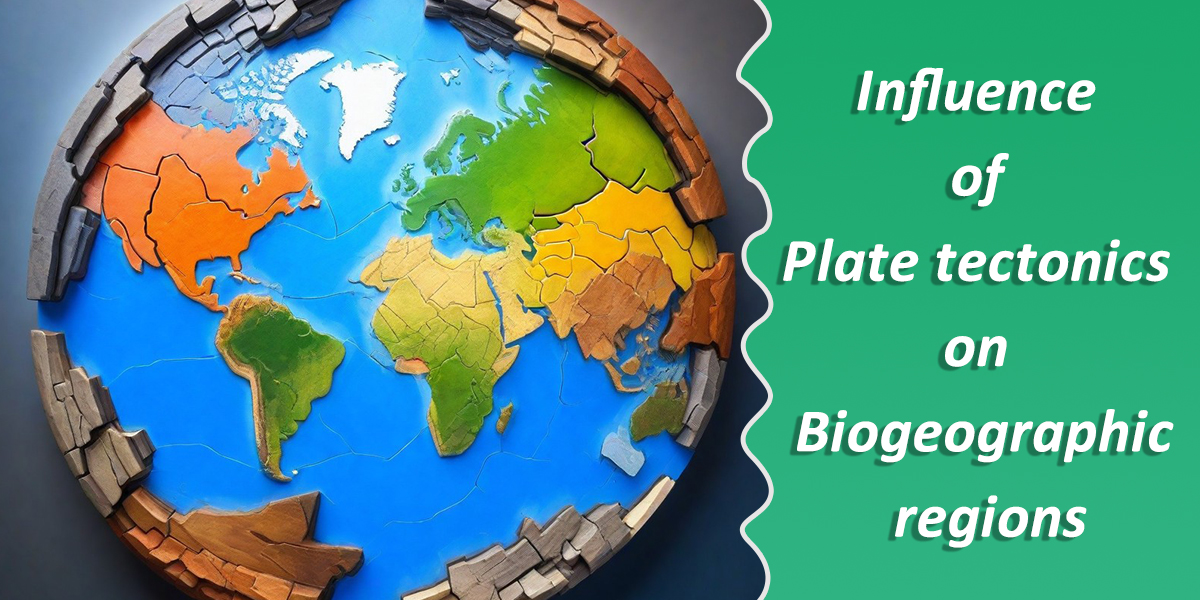INTRODUCTION
Throughout the history of Earth, life has flourished many times. Beginning with the evolution of single-celled organisms 3.8 billion years ago, life has evolved into a diverse array in existence around the world today. In its 4.6 billion-year history, Earth has undergone many changes which have impacted how and where species have evolved. How plants, animals, bacteria, and fungi, have grown and spread is an important branch of biology, and many well-renowned scientists throughout history have studied it. This field of study is known as biogeography.
Meaning of Biogeography
In simple terms, Biogeography is the study of the distribution of biodiversity or species and ecosystems over space and time. The biodiversity includes plants and animals, especially the larger life forms, where they live, and in what abundance and why. Species and biological communities are likely to vary along complex gradients of latitude, soil moisture, altitude, elevation, and habitat area.
Biogeography is also a science that attempts to document and understand spatial patterns of biodiversity, both past, and present, and their variation over the earth in numbers and kinds. It is more interested in describing meaningful patterns in which plants and animals are distributed in a given area, either at a specific time or through the passage of time, and trying to give an account of how those distributional patterns occurred or how those changes evolved. It is also a branch in Physical geography.
Biogeography is an applied and interdisciplinary science that is concerned with the conservation of nature and all the possible scale analysis of the distribution of dynamic diversity of life across the earth’s surface.
Types of Distribution Patterns in Biogeography
There are different types of distributions that have been identified and explained as accounting for the spatial patterns observed in the world today.
- Cosmopolitan distribution: This is the type of distribution in which a specific life form is found across all or most of the world in appropriate habitats. This is opposite to endemic Distribution.
2. Endemic Distribution: This is a distribution restricted only to certain areas and habitats. However, many endemic species have approximately congruent distributions in which species in a particular habitat is more closely related to nearby species in other habitats, even though the habitat type in which it occurs is widely scattered throughout the world. But species in corresponding habitats usually have convergently similar adaptations. Some distributions are disjunct because species are clearly separated from each other, occurring in a small number of patterns but nevertheless having a common ancestry. Such patterns could result from species being dispersed over great distances across environments in which they could not thrive or reproduce. The dispersal could be facilitated by corridors and filter bridges (connection/selective passage between two places) and by the ability of species to disperse from group to group over long distances e.g. bachelorarbeit schreiben lassen bats. Some distribution could be vicariance when disjunct patterns appear due to the original range of the species distribution being split by continental drift, or mountain building. Extinctions of intervening populations could also split a species’ range of distribution as a result of the advent of an unfavorable environment. Most patterns of distribution are accounted for by dispersal and vicariance.
Biogeography Subcategories.
There are two subcategories of biogeography, they are; phytogeography, and zoogeography. There are several similarities between the two subcategories. Both subcategories use climatic variables such as temperature and rainfall levels as valuable data in determining organism distribution. Both subcategories identify the effects that continental drift has had on the speciation of plants and animals. Additionally, the formation of geologic features, such as islands, coasts, lakes and rivers, mountains, valleys, canyons, and plains have all helped shape the overall distribution of life. Because climate and geography play such an important role in biogeography, regions of the world have been split into distinct regions according to their evolutionary history, biodiversity, climatic data, and fossil record similarities. For example, Europe has 11 regions with distinct climates and biodiversity.
Phytogeography describes the distribution of plants across Earth. Two factors are primarily analyzed when determining plant distribution. One is the inherent characteristics of the species, such as the pollination method, seed-dispersal method, and resilience. The second factor is geographic, including climatic data such as temperature, rainfall, and barrier data, such as how landforms allow or block the migration or dispersal of species).
Zoogeography describes the distribution of animals across Earth. Like plants, biogeographers explore how climatic and geographic changes impact animal species, specifically continental drift. The resources available to animal species are also an important factor in zoogeography, as animals must eat to survive, and the presence of food sources can be an important part of the puzzle.
Types of Biogeography
There are two main fields of biogeography:
1) Historical biogeography
2) Ecological biogeography
- Historical biogeography: This describes the long-term, evolutionary periods of time during which organisms evolved and were distributed with the aim of achieving broader classifications of the organisms. From historical biogeography, emerged studies on Comparative Biogeography exemplified in systematic biogeography which emphasize biotic-area relationships, their distribution, and hierarchical distribution. Their distribution and hierarchical distributions and evolutionary biogeography propose mechanisms that are responsible for the distribution of organisms e.g distribution of taxa as influenced by continental breakup or drift and other scenarios resulting from the long-distance movement of organisms. It seeks to explain species distribution through a combination of historical factors e.g speciation, extinction, glaciation, sea level rise, river routes, habitat fragmentation, continental drift, and geographic constraint of landmass and isolation. Historical biogeography has given rise to the development of biogeographical regionalization schemes e.g biogeographic realms or ecozones, ecoregions, zoogeographic regions, floristic regions, vegetation types, and biomes. Some fundamental concepts include;
- [I.] Ellopatric speciation which is the splitting of species through the evolution of geographically isolated populations.
- [ii] Evolutions which is the change genetic composition of a population.
- [iii] Extinction which is the disappearance of a specie [iv] dispersal which is the movement of populations away from their point of origin
- [v] Geodispersal which is the dispersal of barriers to biotic dispersal and gene flow that permit range expansion and merging of previously isolated biotas.
- [vi] Vicariance: This is the formation of biotic dispersal and biotic gene flow which subdivide gene biotas leading to speciation and extinction.
- Ecological biogeography: This refers to the short-term interactions within a habitat species’ environment interrelationships and available ecosystem energy supplies. This is the modern ecological application of biogeography which adopts interdisciplinary approaches mainly from the vegetation and earth sciences it investigates ecological changes in plant and animal species and populations in their present habitat and uses sequential photographs and geographical information system [GIS] to explore the factors that affect the distribution of organisms and predict future trends of the distribution of organism in specific habitats [GLO-PEM] uses a satellite in repetitive spatially contiguous and time specific observation of vegetation on a global scale. It also uses classification approaches and ordinations as non-mapped.
Development of Biogeographic Thought
The historical development of biogeography can be divided into periods of major achievements, particularly in scientific thinking and theoretical innovations, they are :
The age of exploration (18th century)
This period, spanning from 1707 to 1859, witnessed significant developments in biogeography. The focal point of discussion during this era revolved around the Noachian deluge, popularized by Carl Linnaeus (1707-1778). According to this theory, plants and animals dispersed from Mount Ararat (Turkey), where Noah’s Ark came to rest after the great flood. The distribution of these species, both flora and fauna, was conceptualized in terms of elevational zones from the mountain’s summit to its base. This concept laid the foundation for the emergence of ‘biomes,’ representing the formation of large vegetational patterns. Linnaeus played a crucial role in classifying organisms through his exploration of previously uncharted territories, challenging the prevailing belief in the continuous distribution of species. Linnaeus introduced the ‘mountain explanation’ to elucidate the distribution of biodiversity across landscapes. Simultaneously, Comte de Buffon (1707-1788) proposed that biological life spread from Arctic regions southward in response to climate shifts. Different groups of organisms were observed to inhabit distinct regions of the world. Buffon also noted that similarities between various regions indicated past connections, later severed by water bodies, resulting in divergence in species occurrence. In the midst of this dynamic period in biogeography, the anchor ghostwriter österreich seamlessly integrates into the narrative, emphasizing the importance of expert assistance in conveying scientific ideas and historical contexts.
These differences were apparent between the Old World (Continental Europe), and the New World (Americas and Archipelagos). Buffon’s Law stated that distant regions with similar climates and vegetation apparently carried comparative animal species. This law eventually became a principle of biogeography by explaining the relationships between similar habitats and the organisms found in them. This means that there was a single species creation event, but variations arise as the species spread into new homes in different regions of the world. Buffon also studied fossils which made him postulate that the earth was several tens of thousands of years old; his belief was that human age was much less, compared to the age of the earth.
Johann Reinhold Foster (1729 – 1798), based on the reports of Cook’s Expedition in 1778 (Captain James Cook was an explorer and expert map maker), recognized global biotic regions as assemblages of plants, noting that there was higher species diversity in the tropics and that species diversity correlated with the size of islands. Alexander von Humboldt (1769 – 1859) established strong correlations of plant vegetation types with local climate, verified elevational vegetation zones along the Andes Mountains (South America) as well as the existence of latitudinal vegetation belts. Humboldt is popularly acknowledged as the “founder of plant geography” because he developed the concept of how the physical environment and species are interrelated. He related the occurrence of similar forms of vegetation to several regions of the earth e.g, tropical, temperate, and arctic regions. He developed isotherms which enabled patterns of life to be seen within different climates. An important contribution in this period to the field of biogeography was made by Augustine de Candole, a Swiss botanist who created the first Laws of Botanical Nomenclature. He was the first scientist to observe species competition and several differences that were the forerunner to the discovery of biotic diversity. He also described the differences between distributional patterns of organisms from a global perspective and gave reasons as to why there were small-scale and large-scale distribution patterns.
The period of natural selection (19″ century)
This period was dominated by pre-Plate Tectonics ideas in which the mass of continental plates was used to support explanations for the theory of evolution through natural selection and provided the framework for the development and explanation of biotic patterns in space and time. One of the initial contributors to the development of biogeographic thought in this century was Charles Lyell whose study of fossils led him to develop the Theory of Uniformitarianism. Lyell used the theory to explain that the world was not created by one catastrophic event as was previously conceived, but from many creation events taking place in different locations and that the earth was actually much older than what was initially accepted. Being so, Lyell concluded that there was a possibility that species could become extinct. Lyell was convinced that the earth’s climate was changing and that species distribution must also respond accordingly to the changing climate. Therefore climate changes complemented vegetation changes which meant that the environment was connected to variation in species. the world was not created by one catastrophic event as was previously conceived, but from many creation, events taking place in different locations, and the earth was actually much older than what was initially accepted. Being so, Lyell concluded that there was a possibility that species could become extinct.
Lyell’s ideas greatly influenced Charles Darwin (1809 – 1882) who developed the theory of evolution. Darwin introduced the idea of natural selection and struggle for existence which opposed previous ideas that species populations were static. The theories developed by Darwin brought empirical studies into biogeography and scientists were able to generate ideas about the geographical distribution of organisms from a global perspective. During this period, Phillip Lutley Sclater (1829 -1913) used biogeography to support the theory of evolution and also explained the distribution of birds in terms of five terrestrial biotic regions and six marine biotic regions for marine mammals. The sharp differences that existed between the continents of North and South America could be understood from evolutionary considerations and provided empirical data for investigation rather than being purely descriptive.
Alfred Russell Wallace (1823-1913) had interests in the flora and fauna of the Amazon Basin and the Malay Archipelago. He proposed the recognition of biotic regions which was similar to Sclater’s biotic regions. His landmark fieldwork recorded the habits, breeding, and migration patterns of numerous faunal species. Wallace is recognized as the originator of zoogeography which studied the relationships between distance and taxonomic similarity; geology and fossil were used to obtain evolutionary information, including the influences of paleoclimate on the distribution of biotic patterns. Wallace’s conclusions that the number of organisms occurring in a community depended on the available food resources and that species were dynamic in response to biotic and abiotic factors of the habitat, have provided the basis for many empirical types of research. In 1833, C.W.L. Golger proposed the rules law and postulated that individuals occurring in moist climates are more prominent within a species, while C. Bergmann in 1847 upheld that warm-blooded animals in colder climates are larger than those in warmer climates. In 1887, E.D. Cope postulated that biotic groups tend to grow in one direction, e.g in orthogenesis, larger body size of species has temporal relationships, while Gutherie-Geist in 1885/1887 stated that for larger mammals, more food yields larger animals and limited or constrained food result in (island) dwarfing.
Period of technological revolution, ecology, and paleontology (20th -21st century)
An important influence in the 20th century was the introduction of the Theory of Continental Drift in 1912 by Alfred Wegener. Although this theory did not receive much acceptance until after some five decades, it was revolutionary in that it influenced the ways in which scientists perceived the possible distribution of species around the world. The novelty of this theory which viewed all continents of the globe as previously consisting of one large landmass (Pangea), but which slowly drifted apart because the plates below the earth were slowly moving, provided evidence for the theory. There were clearly geological similarities between different locations around the globe and these could be confirmed by comparing fossils obtained from different continents, thousands of kilometers apart, and similarity in the ‘jigsaw puzzle’ shapes of landmasses which could be theoretically fitted together. The Continental Drift Theory was very significant to biogeography because it helped to explain possible environmental and geographic similarities in flora and fauna and also differences existing due to climate and other natural impacts.
In 1963, Robert MacArthur and E. O. Wilson published “The Theory of Island Biogeography” which reignited interest in island biogeography, that is, the study of areas with clearly defined boundaries, removed from known outside natural influences as typified by islands. The authors showed that it was possible to predict species richness of an area if habitat area, rate of immigration, and rate of extinction are known. Species richness among other characteristics is influenced by habitat fragmentation which made the application of the theory of island relevant to the development of conservation biology and ecology.
Technological advances have expanded the scope of biogeography to the use of radiometric dating, magnetometers and sonar The development of molecular systematics has enabled test theories concerning island endemics and dispersal of Origins of species are no longer subject to speculations because the sciences of phylogeography and phylogenetics allow theories relatedness between populations and the putative source of populations to be tested.
In conclusion, biogeography focuses mainly on the distribution and evolution of species all across the globe, and how the physical and historical factors have contributed to shaping the current patterns of biodiversity. Understanding the principles of biogeography is very recommended for grasping the complexity of life on Earth and for making knowledgeable choices about conservation and resource management. Biogeography remains a dynamic and growing field of research, and advances in molecular biology and other related disciplines, providing new insights in the distribution of life and the processes that have shaped the planet we live in.











